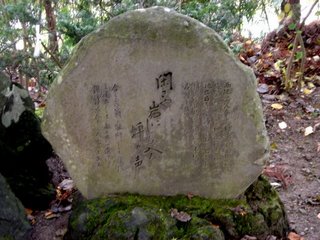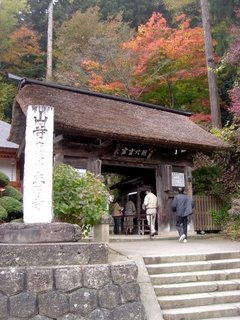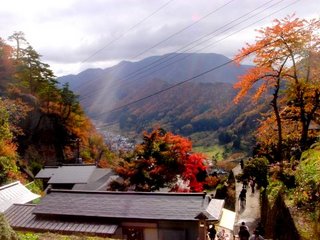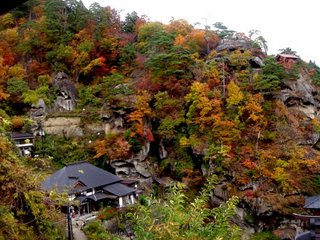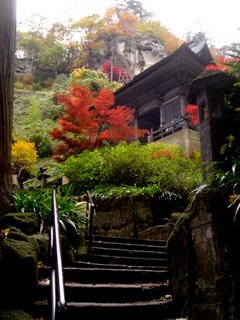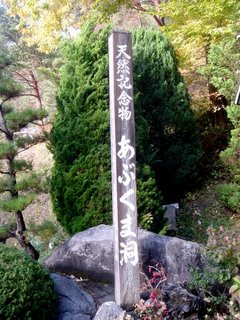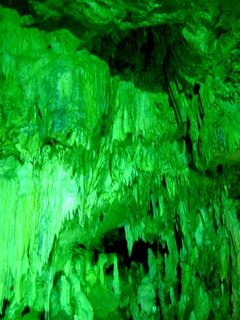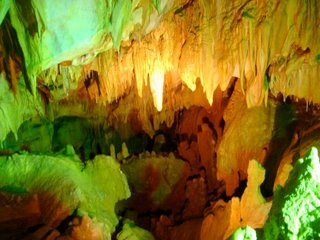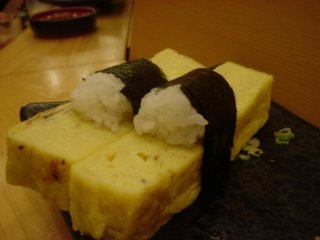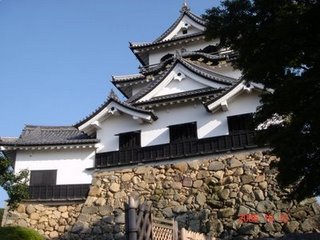The dolls of Chrysanthemum at Kasumiga castle in Nihon-Matsu city
This blog is also written about my travel in Tohoku area. And this time, I would like to write about the event that is The Dolls of Chrysanthemum Festival called "Kiku–Ningyo" at Kasumiga castle in Nihon-Matsu city. 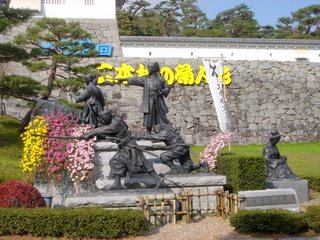
When we wanted to enter into the Kasumiga castle, we could found the bronze statues who died at the Boshin-war when they were so young. Generally the bronze statues aren't decorated with flowers, but the date was special.
And this is the entrance of the castle, and there is a long stone stairway in front of the gate. Can you find the two dolls on the stairway? They are so small on the picture.
We enjoyed a lot of chrysanthemums in the castle. And the chrysanthemums is called "Sen–Rin-Zaki" that means "One thousand chrysanthemums". And the explanation about the chrysanthemums describe that the number is 1725. Wow, it's over one thousand!
we enjoyed a lot of single chrysanthemums also. And this was my best chrysanthemum at the event. Is it beautiful?
But some of the chrysanthemums were already dead, and others didn't start flowering yet. Because, it makes everybody enjoy some of full-blown chrysanthemums over the term. 
The theme of this year is "Komyoga-Tsuji" that is the famous period drama and the story is the success story of Kazutoyo Yamanouch who was a just soldier when he was young. But finally he became a King. So a lot of the chrysanthemum dolls show some scene in the drama. I can't remember the exact number of the scenes and it might be around 15.
So there were a lot of people on the drama in included Kazutoyo. And this scene is Hanami that is cherry-blossom viewing.
We enjoyed a lot of chrysanthemums all over the event included the drama. And the waterfall is also dressed with the chrysanthemums.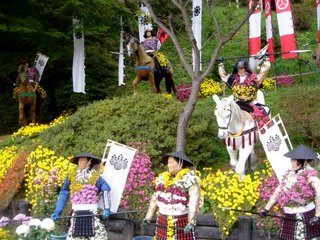
This is the biggest scene of the drama that is Sekigahara-war. The Samurai on the horse is Kazutoyo. Maybe you can see that the dolls wear the chrysanthemums. 
After the drama, the atmosphere was changed to Japanese story of olden times. And the picture is "Sichi-Fuku-Jin" that is the Seven Deities of Good Fortune.
If we see the picture carefully, we can find the autumn leaves. 
We found the doll that is changing the chrysanthemums and we went near the doll and took the picture. And we found the fact that general people can try the change with our reservation.



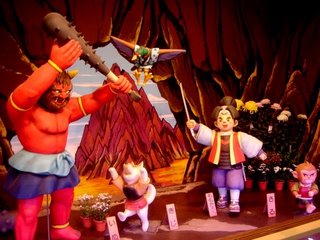
These pictures are Japanese story of olden times. Someday, I would like to describe the stories.
This isn't Japanese story of olden times. And is a puppet show that describes a woman who fights with her incurable disease and her name is Chieko. They also wore chrysanthemums.
I took the picture on the hill after went out from the event. We could see the whole place of the event. This side is the scene of the Sekigahara-war, can you remember?
We enjoyed the chrysanthemum doll festival so much. And the festival is unique for me.
When I visited some places in Tohoku area. I found the fact that they really love their local famous people. It's bit difference from other country's one.




